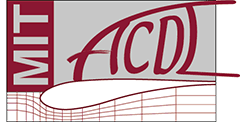The design of aerospace vehicles is a multistage process, in which the concerns
of each discipline are brought together in order to achieve an optimum design
throughout the vehicle’s mission. In the first stage, conceptual design,
candidate configurations that are defined in terms of tens of parameters are
analyzed at ten-of-thousands operating conditions using simplified techniques
from each of the disciplines. In the second stage, preliminary design, the
number of parameters that define the vehicle increase by an order of magnitude
or more, and hundreds of operating points are analyzed with increased fidelity
discipline-specific tools. In the third stage, detailed design, again the number
of parameters increase, the tools become more precise, and the number of critical
operating points decreases.
In order to execute this multistage design process effectively, various analyses
must be able to use a single set of parameters to define the respective geometric
configurations. There must also be the ability to quickly and accurately transfer
information (at times, conservatively) amongst the requisite multi-fidelity,
multidisciplinary models.
A newly AFRL funded program: Computational Aircraft Prototype Syntheses (CAPS)
will satisfy the above by combining proven computational geometry, meshing, and
analyses model generation techniques into a complete browser-based, client-server
environment that is accessible to the entire design team of an aerospace vehicle.
The existing underlying technologies upon which the new CAPS system will be built
include EGADS, OpenCSM, the Web-based 3D Viewer (the Engineering Sketch Pad).
New technologies to be developed under this program include a dynamically-
loadable Analysis Interface & Meshing (AIM) subsystem, a CAPS executive that
supports both browser-based user interactions and Multidisciplinary Analysis
and Optimization (MDAO) frameworks, an Analysis Subsystem that is responsible
for transferring information amongst the various multidisciplinary, multi-fidelity
models, and a Legacy Geometry Converter that allows one to build analytic geometry
(in the form of a Boundary Representation) and to fit a fully parametrized
vehicle model from a legacy configuration.

